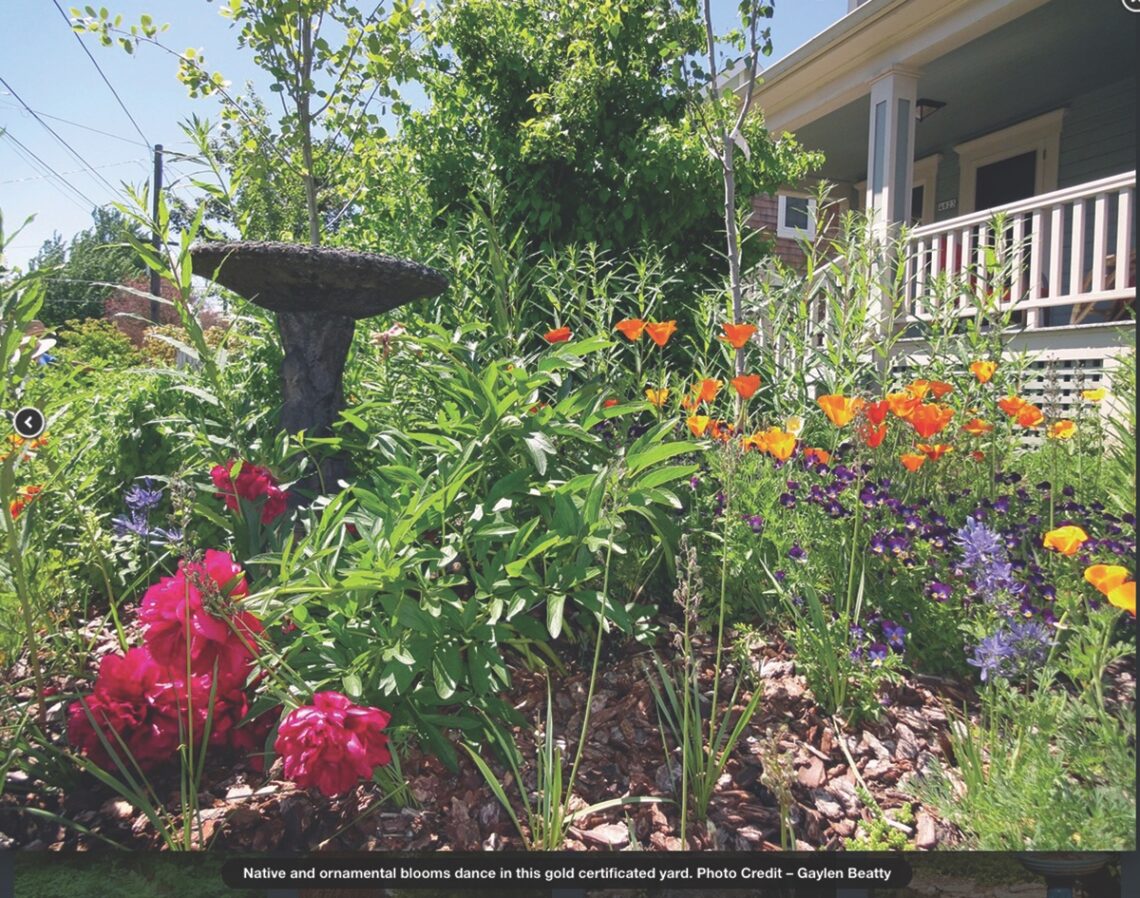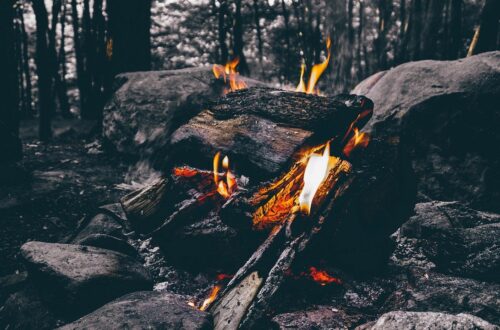Do you wish that reducing your environmental footprint was as accessible as your front yard? Well, it is!
In Eugene, Oregon, where the Northwest Center for Alternatives to Pesticides (NCAP) is headquartered, many residential neighborhoods are bursting with manicured yards and perfectly trimmed green lawns. The abundant winter rainfall makes for an effortlessly lush, green color to accentuate houses. In the summer, those lawns are still bright green. Even in late August when it hasn’t rained in weeks, the gleam of vivid, wet grass remains, unbroken by clumps of yellow dandelions or even a patch of clover. These lawns exist year-round, despite the usual absence of frolicking children, pets, or sunbathers.
For many, lawns have become a status symbol. In exchange for a sea of green, homeowners are expected to provide water, gasoline for mowers, time for maintenance, and often herbicides.
Based on its satellite photography, NASA estimates that lawns are the United States’ most irrigated crop, beating out corn (yes, corn!) by three times.[1] According to the Environmental Protection Agency (EPA), the average family in the U.S. uses an average of 30 gallons of water a day on outdoor use. Fifty percent of the water used on lawns ends up as runoff, spreading pesticides and fertilizer into waterways.[2]
In addition to water, Americans use 800 million gallons of gas in lawnmowers each year to maintain their lawns. One hour of mowing produces the same amount of greenhouse gasses as driving 350 miles in a car. Besides that, 17 million gallons of gas are accidentally spilled onto the ground while refueling mowers every year–more gas than in the Exxon Valdez spill. This fuel is then washed into storm drains by rain or sprinklers, or baked into the atmosphere on a hot day.[3]
Many proud lawn-tenders also rely on herbicides to keep their lawns unmarred by “unfavorable” plants. Roundup, Monsanto’s glyphosate product, which kills weeds on contact, is the most common lawn herbicide. Five million pounds of Roundup are used in lawn care each year.[4] Glyphosate was recently classified as “probably carcinogenic” by the International Association for Research on Cancer, an independent group of cancer researchers.[5] For a long time, it has been linked to non-Hodgkin’s lymphoma.[4]
Other common lawn-care chemicals demonstrate health risks as well. If a lawn is to be actively enjoyed by one’s family, the risk presented by direct spraying is considerable. More sustainable options exist.
The Lawn Institute, a pro-lawn, informational website, cites noise suppression, visibility and carbon sequestering (among many other things) as benefits to having a turf grass lawn.[6] What many homeowners may not consider is that most benefits of having a traditional lawn can be achieved through the smart use of alternative plants. One good option is planting a lawn that is partially or entirely made up of clover. Clover will stay green year-round with very little need for watering and is a great food source for bees. It introduces nitrogen into the soil very efficiently, making it a natural fertilizer.[7] Clover sustains foot traffic and can outcompete weeds. Micro clover (Trifolium repens L. var. Pirouette) grows low to the ground so that little or no mowing is required. Since clover spreads easily, keep that in mind when planning your lawn.
Various wildflowers and mosses can also provide good ground cover that requires little water and no mowing. Planting anemone, lily of the valley, creeping Charlie, sweet woodruff and thyme will yield a lower-maintenance lawn and attract your local pollinators. Moss is also a good option, as it can be walked on, spreads easily, and grows well in shade.[8] Sedge lawns look much like traditional turf lawns, but do not require mowing and will do well in a variety of moisture and shade conditions.
If you are one of the many people who maintain a turf grass lawn year-round, consider the real purpose of your lawn. If you like having somewhere to sit on summer evenings, perhaps a combination of flowering plants and a patio space would suit your needs. If your kids and pets need open space, try a hearty native grass or clover. Alternative lawn options allow lawns to become useful ecosystems for insects and small animals, in- stead of a man-made ecological desert. Plus, they will save you time and energy that could be spent enjoying your yard!
- http://earthobservatory.nasa.gov/Features/Lawn/lawn2.php
- https://www3.epa.gov/watersense/pubs/outdoor.html
- http://www.peoplepoweredmachines.com/faq-environment.htm
- NCAP Factsheet
- http://www.iarc.fr/en/media-centre/iarcnews/pdf/Q&A_ Glyphosate.pdf
- http://www.thelawninstitute.org/pages/education/lawn- history/field-of-dreams/
- http://eartheasy.com/grow_lawn_alternatives.htm
- https://www.planetnatural.com/organic-lawn-care-101/alternatives/
Edie Powell is a student and artist from Eugene, Oregon. For the last four years she has worked as the Communication and Campaigns Assistant for the Northwest Center for Alternatives to Pesticides.






